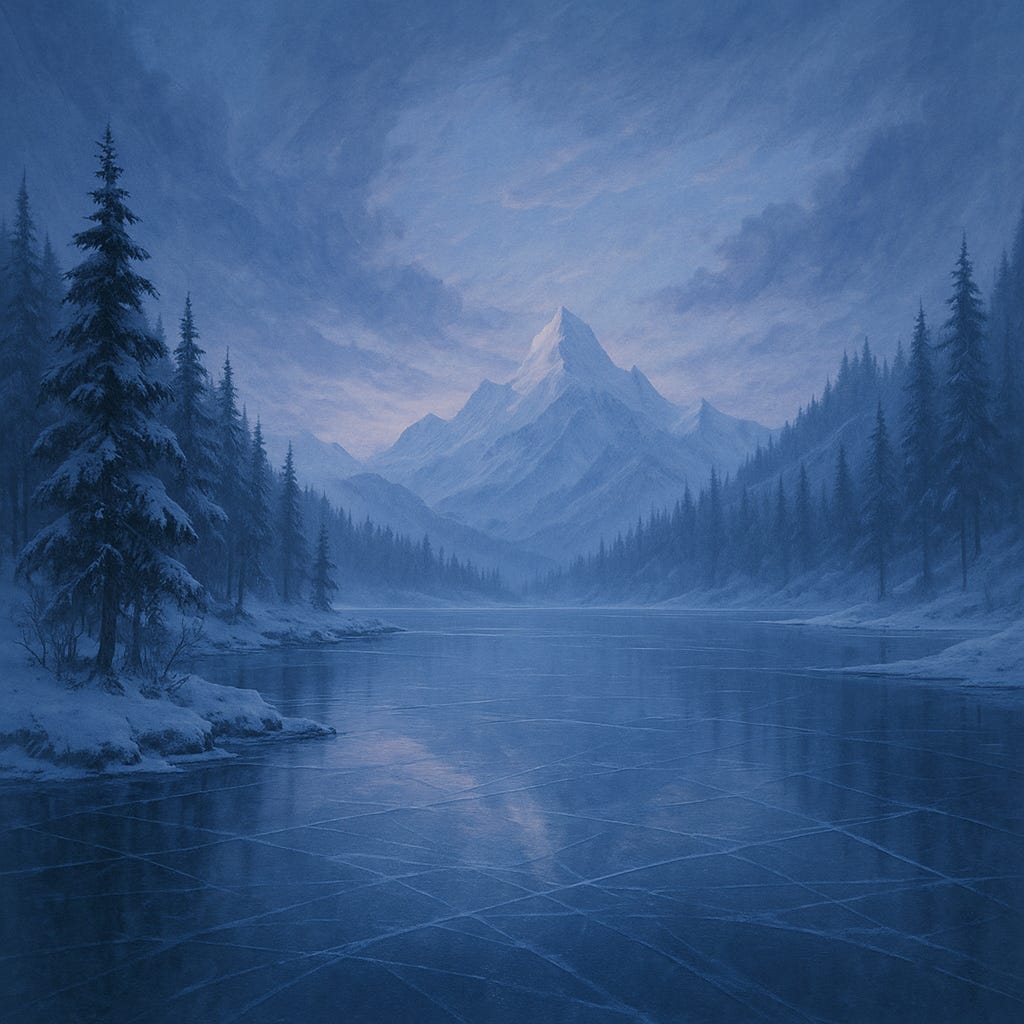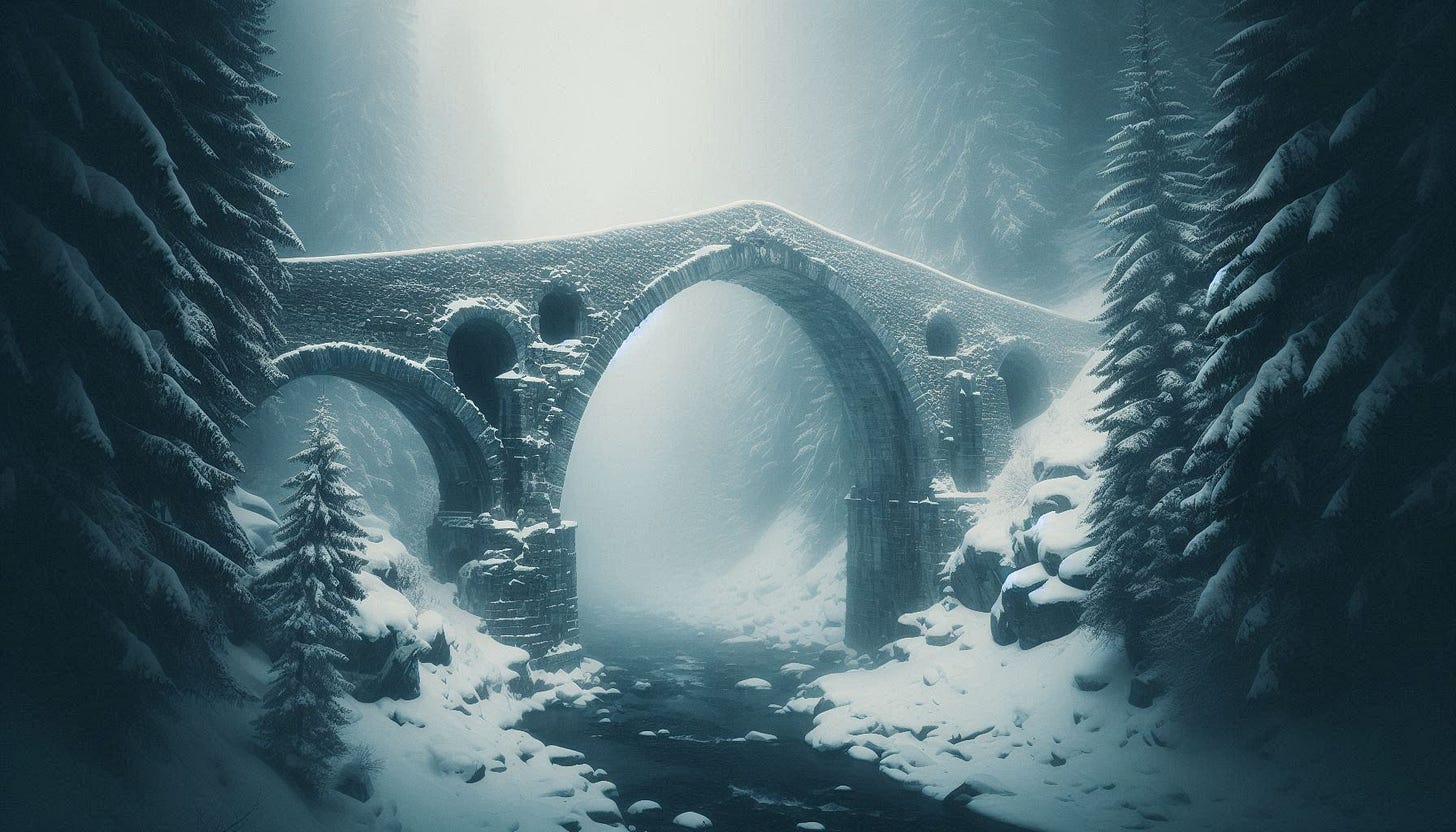Neurodivergent Gumbo: Round 2
Frozen — The Conformity Machine, the Borg, and the Trauma That Built a Princess (Part I: The Blueprint)
We’ve been here before — stirring through the Disney pot, lifting the lid on what we were fed as children, and finding something far heavier than fairy dust.
In Round 1 of Neurodivergent Gumbo, we cracked open The Princess and the Frog, Mulan, and Pocahontas and asked the questions Disney never wants children (or adults) to ask:
Who benefits from this fantasy?
Who gets erased to make this magic possible?
What stories are we being trained to swallow whole?
Now we’re stepping back into the kingdom, and this time the ice is hiding more than snowflakes.
Frozen looks modern. Progressive. Empowering.
But underneath the power ballads and Pinterest aesthetics is a familiar architecture — the same old blueprint Disney loves to recycle:
Silence as safety.
Obedience as survival.
Difference as danger.
And a child forced to contort herself to protect a world that won’t name its own harm.
Part I of this Frozen deep dive begins where all trauma stories begin: childhood.
The closed door.
The emotional vacuum.
The legacy that shaped two girls long before either of them had the language to understand what was being done to them.
This isn’t backstory.
This is the operating system.
And like everything Disney builds, it teaches us far more than it intends.
Welcome back to the pot, love.
Let’s melt the ice.
Disney knows how to begin a story—with spectacle, feeling — something that looks like magic. But underneath the sparkle, the opening of Frozen is doing something else entirely. It’s setting the stage for a family built on fear.
The film starts with beauty: men carving ice in rhythmic, choreographed motion. It’s familiar, almost nostalgic—like scenes lifted from frontier mythology, the kind that romanticizes labor without naming the harshness beneath it. We see Kristoff as a tagalong, a child absorbing craft and survival skills in a world that assumes boys will someday be men who work with their hands. It’s all surface-level charm, a soft beginning masking a colder truth.
Then the story pivots to the sisters, and the tone shifts. Their early play feels tender, pure—two girls building a world together before anyone teaches them to fear themselves or each other. When Elsa misfires, it isn’t malice. It’s childhood. It’s curiosity. It’s lack of guidance. But the moment she cries out for help, the entire narrative snaps into place: fear enters the home, and everything loving becomes dangerous.
The father responds not with comfort but with reprimand. The mother, emotionally present in gesture but not in voice, hesitates—she is already carrying her own silence, a woman whose cultural origins we later learn were erased in order for her to survive the kingdom she married into. Her quiet is not mystery; it’s assimilation. She doesn’t name Elsa’s power because she cannot name her own past.
And the father? He does what frightened men in charge have always done: he seeks power without accountability. He goes to the trolls—to Pabbie and the others—not out of respect but out of need. It’s a pattern he inherited from his father, though the movie will not reveal that for another film. He trusts the mystical Other to fix what he does not understand, yet he never imagines what community care might look like at home.
The trolls remove Anna’s memories. The magic is stripped away; the relationship is broken without explanation. Anna is left with a gap she will spend the entire movie trying to fill. Elsa is left with guilt she will nurture like a wound. And the parents respond by creating a fortress of silence—closed doors, closed hearts, closed truths.
They choose isolation instead of community. Control instead of curiosity. Fear instead of guidance.
It is the most common family story in the world.
What Disney frames as magical necessity is, in reality, a roadmap for trauma:
a child who learns to hide,
a child who learns to cling,
and adults who mistake secrecy for protection.
The movie wants this moment to feel like mythology.
But it feels like history—personal, familiar, generational.
The kingdom will pay for this choice later.
The sisters will pay for it sooner.
This isn’t simply a prologue.
It’s the blueprint for everything that follows.
Childhood in a House Built on Fear
Once the doors close after the accident, the real story of Frozen begins. Elsa and Anna aren’t simply growing up in a palace—they’re being raised inside an emotional fallout zone. Everything warm in the opening is replaced with distance, as cold as Elsa’s ability to make ice. Everything playful is replaced with caution. What the film frames as “protective isolation” reads instead like generational fear tightening its grip.
Elsa learns her first lesson immediately:
your feelings are dangerous, and your body is a threat.
She’s given gloves, rules, mantras—tools that look like safety but function like restraints. The more she tries to contain herself, the more her fear grows, and the more her fear grows, the more dangerous she believes she is. The cycle becomes self-sustaining long before she reaches adolescence.
Anna, on the other side of the door, learns something entirely different: abandonment with no explanation. She doesn’t remember the accident, only that her sister—her closest attachment—disappeared overnight. She’s left to interpret the silence, and children always fill silence with self-blame. Anna assumes she wasn’t enough to keep Elsa close. She assumes she must fix something. She assumes, without ever being told, that love can vanish without warning and that the only way to regain it is persistent effort.
Where Elsa internalizes fear, Anna internalizes hunger.
The parents’ choices harden these lessons. They never revisit what happened. They never explain. They never model how to navigate conflict or guilt or vulnerability. Instead, they build a household where secrecy stands in for safety. Every difficult conversation is avoided. Every emotional truth is buried. And every day the sisters grow farther apart, the more solid the silence becomes.
What emerges is not a family—it’s two children being shaped by the emotional limitations of the adults around them. Elsa becomes a master masker, trained to anticipate danger in herself. Anna becomes relentlessly hopeful, trained to chase connection wherever it appears. Neither is given the chance to develop a healthy sense of self; they’re only taught to manage the aftermath of fear.
And when the parents die, this fragile system collapses completely. Elsa retreats even further into control. Anna is left representing the royal family at the funeral—a child performing strength she does not have because no one taught her what real support looks like. The kingdom moves forward, but the girls are frozen in the emotional patterns set into motion years before.
This isn’t a simple childhood montage.
It’s the long echo of a moment that was never addressed.
A family that cannot name its fear will always pass it down.
Runeard: The Original Sin of Arendelle
If Elsa and Anna’s childhood shows how fear shapes a household, Runeard shows how fear shapes a nation. His presence in the first film is almost invisible—a portrait on the wall, a name in the background—but the second film reveals exactly what kind of legacy the girls were living under. And once you understand him, the silence inside that palace suddenly makes perfect sense.
Runeard is not a neutral ancestor. He is the architect of Arendelle’s deepest lie. While Frozen tries to frame the kingdom as benevolent and misunderstood, the truth is that its founding mythology is built on harm, manipulation, and theft. Runeard did not fear magic; he feared anything he could not dominate. He didn’t mistrust the Northuldra because they were dangerous; he mistrusted them because they were powerful without needing him.
His offer of peace was not peace at all—it was reconnaissance. His dam was not a gift—it was sabotage. His diplomacy was not diplomacy—it was a prelude to violence. Runeard followed the oldest colonial strategy in the book: smile, observe, weaken, then strike.
But he didn’t just harm the Northuldra; he harmed Arendelle as well. Leaders pass down more than policy—they pass down worldview. Runeard’s fear of the unfamiliar, his obsession with control, and his willingness to reshape history to protect his own image became the invisible curriculum of the kingdom. His descendants inherited his paranoia without knowing its origin. His son inherited his distrust of magic without understanding the violence that created it. And his granddaughters were raised inside the shadow of a man whose choices they never had the language to name.
When Agnarr runs to the trolls for help after the childhood accident, he repeats Runeard’s pattern perfectly: seek wisdom from the people your lineage harmed, but only when you need something from them. Even the king’s fear-based solution—close the gates, hide the truth, suppress the girl—feels like Runeard whispering across generations. Harm does not need to be taught explicitly to be learned; it only needs to be modeled.
The kingdom valorizes Runeard as a hero because it must. Admitting the truth would unravel the entire narrative Arendelle tells itself about who it is. Nations that build themselves on conquest rarely teach that history honestly; they teach the version that preserves innocence. Runeard’s portrait stays on the palace wall because it maintains the illusion of goodness. Removing it would require a reckoning that the story is not prepared to handle.
And so Elsa grows up thinking her power is the problem. Anna grows up thinking her longing is the problem. But the real problem was always the man whose fear became the moral foundation of the kingdom—fear that trickled down through policy, parenting, and silence until it reached the girls as something indistinguishable from truth.
Runeard is long dead by the time Frozen begins, but his logic is everywhere: in the isolation, in the secrecy, in the belief that difference must be controlled or concealed. The kingdom didn’t need magic to fracture; it only needed a lie old enough to feel like tradition.
This is the inheritance the sisters carry without knowing it.
A wound disguised as history.
A myth disguised as morality.
A kingdom afraid of its own making.💎
Part I laid down the emotional architecture — the fear, the silence, the isolation, and the generational rot passed from a man who built a kingdom on deception. We traced the cracks through the palace walls and into the bodies of two small girls who never stood a chance.
But we’re not done.
In Part II, we follow Anna and Elsa into adulthood, where childhood survival strategies calcify into identity:
Anna — hungry for touch, attention, connection.
Elsa — masking so thoroughly she forgets where the mask ends.
The trolls — the heteronormative chorus selling romance as cure.
And somewhere in that snowstorm, we’ll unpack why a snow anchor is the most grounded piece of wisdom in the entire film.
Round 2 is just getting started.
And this time, the ice is the least of our problems.





